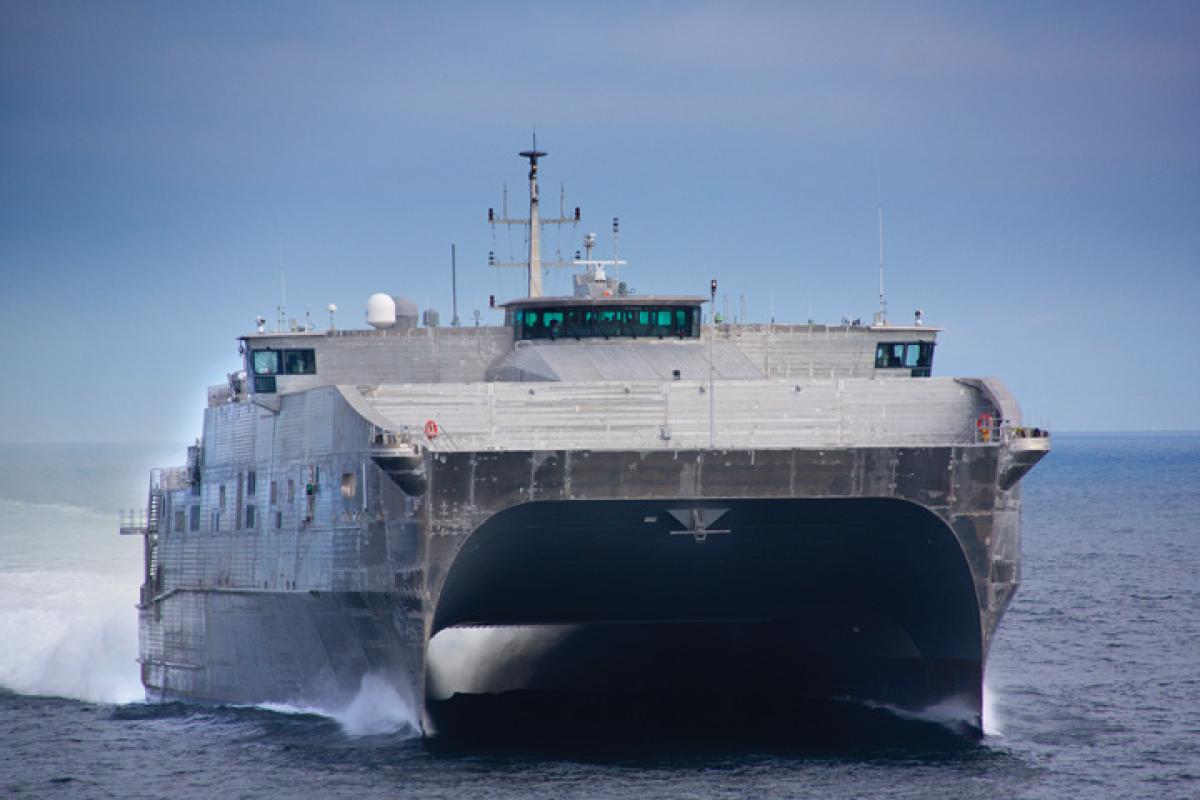The controversy of naming ships and submarines during the past few years has overshadowed the abuse of the U.S. Navy’s ship-designation system. Established in 1920 as “Standard Nomenclature for Naval Vessels,” it was based on a simple yet potentially expansive scheme that allowed the original 43 symbols (e.g., CV for aircraft carrier, DD for destroyer) to cover approximately 120 symbols by the end of World War II.1
During the scheme’s 90-plus years, the first letter of a symbol designated a major category of ships. Thus, the letter D for destroyer-type ships evolved from the basic DD (destroyer) and DL (destroyer leader) to DD, DDE, DDG, DDH, DDK, DDR, DM, DMS, as well as the DE (now FF) and DL (frigate) series.
The first major change to the original 1920 scheme occurred during World War II with the plethora of landing ships and craft, the most famous being the LSD, LSM, LSMR, LST, LSV, LCI, LCM, LCS, LCT, and LCVP. This application of the prefix letter L for amphibious ships and craft was expanded in 1955 with the LPH classification for amphibious assault ships.2 These “aircraft carriers” that operated helicopters and carried Marines would be developed into the larger LHA/LHD assault ships of today’s Fleet. The L prefix was further expanded in the late 1960s to encompass “attack” cargo ships and transports (changed from AKA and APA to LKA and LPA, respectively), and amphibious command ships (changed from AGC to LCC).
This neat system, periodically expanded, survived throughout the 20th century. Now it is being perverted. Probably the first major corruption was the littoral combat ship (LCS). During the World War II era the LCS designation indicated “landing craft support,” with 130 of the ships being built. These 157-foot vessels were armed with mortars and rockets to provide close-in support for amphibious landings.
The application of an L designation for the littoral combat ship, obviously, is misleading and confusing to Americans—in and out of uniform—and especially to foreign naval personnel with whom the U.S. Navy operates. All other L-series ships in the U.S. Navy are amphibious ships. At almost 3,000 tons full load, the littoral combat ship realistically rates as a frigate or corvette. A much more meaningful designation for the littoral combat ship would be based on the F for frigate. A logical and reasonable designation for these ships would be FMM for “frigate, multi-mission,” or FCS for “frigate, combat support,” as the ships are to support combat missions through the use of mission modules.
The two other recent major corruptions of the designation scheme are the joint high-speed vessel (JHSV) and the mobile logistics platform (MLP). The JHSVs are high-speed troop/vehicle transports of a wave-piercing catamaran design. Like the littoral combat ship, the Navy’s leadership has taken the program name and “converted” the initials to a ship designation. Again, confusion reigns. There has never before been an official J-series ship in the Navy.
All other troop/cargo-ship designations in the Navy begin with the letter A. Realistically, the joint high-speed vessels should have been in the AK (cargo) or AKR (vehicle cargo) series. And because they are being civilian-operated under the aegis of the Navy’s Military Sealift Command, they should have a letter T- prefix (e.g., T-AKR). Thus, there are neither historic nor practical reasons for having designated these ships JHSV.
The same is true for the MLPs. All other M-series ships have been mine-warfare ships (e.g., MCS, MMD, MMF, MSB, MSC, MSO). The semisubmersible MLPs are intended to help unload large cargo ships into air-cushion landing craft (LCAC) in the administrative landing of vehicles and cargo.
But because they also carry LCACs, which are amphibious vehicles, a long-unused designation could be applicable—LSV, for “landing ship, vehicle.” Six of these large 451-foot ships were built in World War II. They were ordered under a variety of designations, but all were commissioned as LSVs. In that role they carried tracked (LVT) and wheeled (DUKW) landing vehicles, which were discharged over the side and through a stern ramp. LSV-1 and -2 were converted from 1963 to 1967 into mine-warfare command and support ships; their near-sister ships LSV-3 to -5 were not converted and remained laid up in “mothballs” while assigned the MCS designation; LSV-6 became a net cargo ship (see accompanying table). Thus, like the MLPs, these were extremely versatile ships.
There are ample precedents for large-scale ship-designation changes. For example, in 1975 the Navy changed the designations of some three dozen large “frigates” (DLG/DLGN) to destroyers (DDG) and cruisers (CG/CGN). At the same time, more than 60 escort ships (DE/DEG) were changed to frigates (FF/FFG). Earlier there were large-scale designation changes of amphibious ships from the A-series to L-ships, and mine warfare ships from the A and D series to the M series. All of these designation changes affected ships in active service.
Unquestionably, the LCS, JHSV, and MLP designations must be changed—it is logical and sensible to do so. It can be done with the stroke of a pen by a Secretary of the Navy notice. At the same time, two other ship classes should have their hull numbers changed: The three ships of the Zumwalt (DDG-1000) class and the three submarines of the Seawolf (SSN-21) class should be assigned realistic hull numbers within their respective types, and thus be in accord with the 90-year-old directive that stated ships were to be designated in sequential order within their designation types.
The U.S. Navy’s basic ship-designation system is excellent and deserves to be carried out professionally and logically.
1. Office of the Chief of Naval Operations, Navy Department, General Order No. 541, 17 July 1920. The directive also included Y-series “district” or “yard” craft; they are not addressed in this column.
2. The U.S. Navy designation LPH has never signified “landing platform helicopter,” as it appears in some publications.



